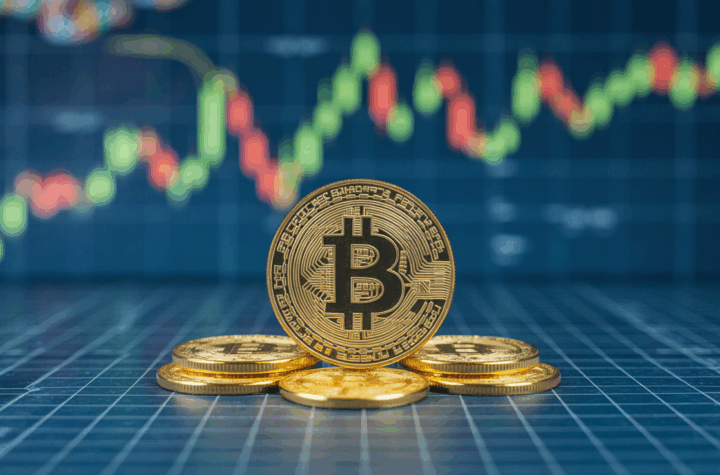
Bitcoin’s Evolving Role: Redefining Safe Havens in a Volatile World
Bitcoin has long been debated as a safe haven asset, but in today’s increasingly unpredictable financial environment, it might be time to reconsider what qualifies as “safe.”
Historically, investors have turned to gold and government bonds during times of market uncertainty. These assets have been seen as stable, low-risk, and dependable, offering protection against volatility. However, with markets operating around the clock, geopolitical tensions on the rise, and growing skepticism about the reliability of sovereign systems, the traditional view of safe havens is coming into question. Perhaps it’s time to redefine what a safe haven truly is.
Enter Bitcoin.
Often criticized for its volatility, Bitcoin has nonetheless proven to be a resilient asset since the market collapse of 2020. The cryptocurrency has surged over 1,000% since the COVID-19 market crash, outpacing long-duration bonds, which have lost around 50% of their value over the same period. Even gold, the go-to safe haven for centuries, has risen by 90% over the past five years, but its gains appear less impressive when adjusted for the mass money printing of 2020, which saw over 40% of the U.S. dollar supply increase.
Despite its stunning performance, Bitcoin’s role as a safe haven remains under scrutiny. In recent risk-off events, it has acted less like a hedge and more like a high-risk asset:
- COVID-19 (March 2020): Bitcoin fell 40%, while the Invesco QQQ ETF dropped 27%.
- Bank Crisis (March 2023): Bitcoin lost 14%, compared to QQQ’s 7% decline.
- Yen Carry Trade Unwind (August 2024): Bitcoin dropped 20%, while QQQ fell 6%.
- Tariff Shock (April 2025): Bitcoin fell 11%, but the Nasdaq dropped 16%.
The first three examples show Bitcoin’s behavior aligning more with high-risk, high-reward tech stocks than a traditional safe haven. However, during the most recent tariff-induced selloff, Bitcoin exhibited strength by falling less than the broader market, signaling potential as a safe haven in a weakening macroeconomic environment spurred by President Trump’s tariffs.
While these individual instances don’t establish a clear trend, they point to a broader shift in the financial landscape.
NYDIG Research recently noted, “Non-sovereign stores of value, such as Bitcoin, should perform well in the current environment. Politically neutral assets are less vulnerable to the tumult of global political systems.”
Bitcoin, though volatile, possesses unique characteristics: it’s globally liquid, decentralized, censorship-resistant, and unaffected by government policies or tariffs. These qualities make it an increasingly appealing alternative to traditional safe haven assets, especially in a world of rising geopolitical instability and economic repression.
Traditional safe havens, meanwhile, are starting to show signs of strain. Gold’s recent gains are dwarfed by the scale of global monetary expansion, and long-duration bonds are facing pressure as 30-year Treasury yields approach 5%, posing a challenge to portfolios that depend on them.
Since the market selloff began last Thursday, the Nasdaq has plunged almost 10%, Bitcoin has fallen 6%, long-duration bonds (TLT) have dropped more than 4%, and gold has slipped over 3%. Meanwhile, the U.S. Dollar Index (DXY) remains flat, while the U.S. 10-year Treasury yield has surged by nearly 8%.
On a risk-adjusted basis, Bitcoin has performed similarly to traditional safe havens, such as gold and TLT.
Looking back at these major risk events, it’s clear that Bitcoin’s sell-offs have often signaled significant long-term price floors. During the COVID-19 crash, Bitcoin hit a low of about $4,000—an all-time low it has not revisited. In March 2023, during the banking crisis, it briefly dipped below $20,000 before beginning its climb. In August 2024, during the yen carry trade unwind, Bitcoin fell to $49,000—another level that hasn’t been tested again. If history repeats itself, the current low could set a new price floor for Bitcoin in the future.
So, is Bitcoin truly a safe haven?
If the traditional definition of a safe haven—characterized by low volatility and downside protection during market chaos—holds, Bitcoin may not fit the mold.
However, in a world where sovereign risk, inflation, and policy uncertainty reign, Bitcoin offers significant advantages: it is durable, politically neutral, and highly liquid. These attributes may make Bitcoin a more reliable store of value than traditional assets in today’s financial landscape.
Rather than failing the safe haven test, Bitcoin may be indicating that the definition of what qualifies as a safe haven asset needs to be redefined for the modern world.






More Stories
DOGE drops to $0.18 amid long-term holder exits and a looming death-cross price pattern.
Asia Markets: Cautious Calm Settles Over Bitcoin as Risk Positions Rebuild
“Analyst Dubs It ‘Bitcoin’s Silent IPO’ While Dissecting Market Stagnation in Viral Essay”